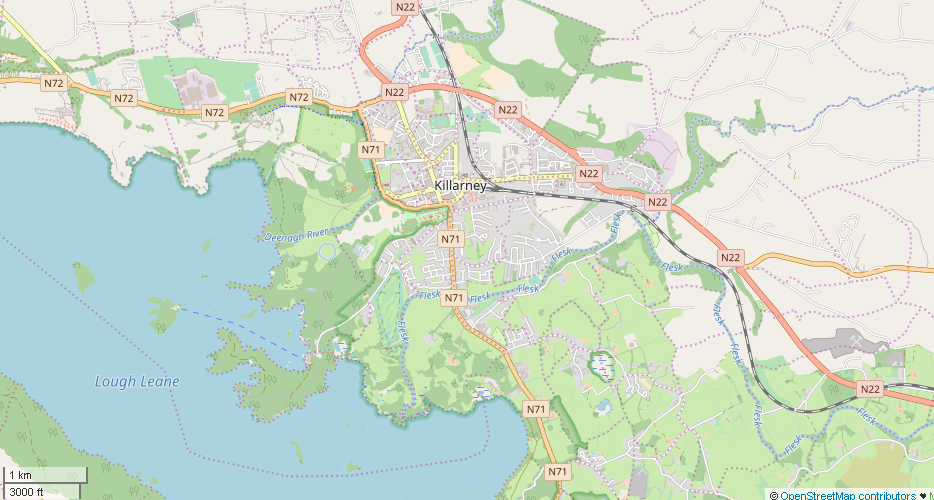|
Sorbus Scannelliana
''Hedlundia scannelliana'', commonly known as Scannell's whitebeam, is a species of shrub or tree endemic to Ross Island near Killarney in southwest Ireland. It is one of the rarest tree species in the world; only five individual plants are known.Rich, T.C.G., Houston, L., Robertson, A. and Proctor, M.C.F., 2010. Whitebeams, Rowans and Service trees of Britain and Ireland: a monograph of British and Irish'Sorbus' L. London: Botanical Society of the British Isles. Description ''Hedlundia scannelliana'' is a small tree growing to about in height. Leaves are elliptic, ranging from 1.6 to 1.85 times as long as they are broad. The upper face of the leaf is a dark, somewhat shiny green, while the underside is light greyish green, this due to the abundance of short, soft hairs. Both the base and apex of the leaf form acute angles, while the margins are lobed, incised 1/7 to 1/4 the way to the midrib. The flowers are white and form a quite dense inflorescence. Very few fruits have been ... [...More Info...] [...Related Items...] OR: [Wikipedia] [Google] [Baidu] |
Ross Island, Killarney
Ross Island is a claw-shaped peninsula in Killarney National Park, County Kerry. Ross Castle is located here and it is also the site of abandoned copper mines, including some believed to be the earliest in north-western Europe. Copper extraction on the site is believed to be the source of the first known Irish Pre-Bronze Age metalwork, namely copper axe heads, halberds and knife/dagger blades dating from 2,400 - 2,200 BC. These finds have been distributed throughout Ireland and in the West of Britain - in South Britain the metalwork was imported from across the English Channel.p142-146, Richard Bradley ''The prehistory of Britain and Ireland,'' Cambridge University Press, 2007, Excavations of the site have unearthed both mining operations and a smelting camp where the Copper ore was processed into a type of metal distinctive enough to be traced to these early tools. As there is no evidence that the complex technology had developed spontaneously, this early metallurgy wou ... [...More Info...] [...Related Items...] OR: [Wikipedia] [Google] [Baidu] |
Killarney
Killarney ( ; ga, Cill Airne , meaning 'church of sloes') is a town in County Kerry, southwestern Ireland. The town is on the northeastern shore of Lough Leane, part of Killarney National Park, and is home to St Mary's Cathedral, Ross Castle, Muckross House and Abbey, the Lakes of Killarney, MacGillycuddy's Reeks, Purple Mountain, Mangerton Mountain, Paps Mountain, the Gap of Dunloe and Torc Waterfall. Its natural heritage, history and location on the Ring of Kerry make Killarney a popular tourist destination. Killarney won the Best Kept Town award in 2007, in a cross-border competition jointly organised by the Department of the Environment and the Northern Ireland Amenity Council. In 2011, it was named Ireland's tidiest town and the cleanest town in the country by Irish Business Against Litter. History Early history and development Killarney featured prominently in early Irish history, with religious settlements playing an important part of its recorded history. Its fi ... [...More Info...] [...Related Items...] OR: [Wikipedia] [Google] [Baidu] |
Hedlundia Anglica
''Hedlundia anglica'', the English whitebeam, is a species of whitebeam tree in the family Rosaceae. It is endemic to Ireland and the United Kingdom, with an entire British population estimated at 600David Jones, ''Welsh Wildlife'', 2003, "Trees", p. 39. individuals. Description ''Hedlundia anglica'' grows as a small tree or shrub, often with multiple stems. The leaves are broader than most other related species, with lobes whose bases are incised up to one third of the way to the midrib. Distribution ''Hedlundia anglica'' is found in several widely scattered sites in southwestern England, Wales, and around Killarney in southwestern Ireland. Ecology and evolution ''Hedlundia anglica'' is usually found growing on cliffs, quarries and rocky hillsides. It appears to be indifferent to soil pH. Occasional specimens are known from oak woodland. Research suggests ''Hedlundia anglica'' arose from a cross between '' Aria porrigentiformis'' and ''Sorbus aucuparia ''Sorbus aucuparia' ... [...More Info...] [...Related Items...] OR: [Wikipedia] [Google] [Baidu] |
Maura Scannell
Mary J. P. "Maura" Scannell (1924–2011) was a leading Irish botanist. Professional career Scannell became Assistant Keeper of the Natural History Division of the National Museum, Ireland, 1949. Her special interest was the botany of Ireland, especially in the past. She was an expert in the identification of woods and charcoals, leading her to identify the material used in all the Irish harps in the National Museum as well as from archaeological sites. The Botanical Society of Britain and Ireland called her "an inspiration to generations of botanists" for her taxonomic knowledge of seeds and fibres as well as microfungi and algae. In 1970, she supervised the transfer of the National Herbarium from the National Museum in central Dublin to the National Botanic Gardens at Glasnevin. She was an active member of the Irish regional committee of the (now) Botanical Society of Britain and Ireland from 1963 to 1994. She was a judge in the Irish Young Scientists Exhibition from the 1 ... [...More Info...] [...Related Items...] OR: [Wikipedia] [Google] [Baidu] |
.jpg)
